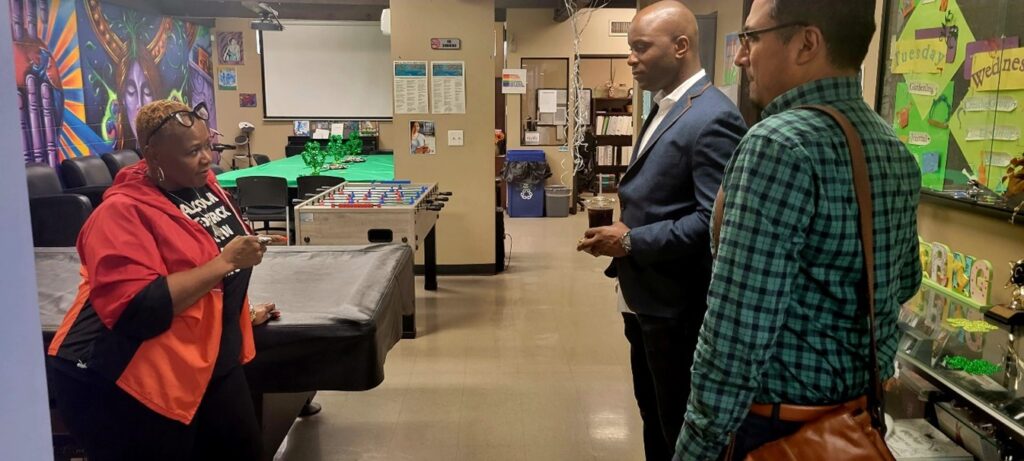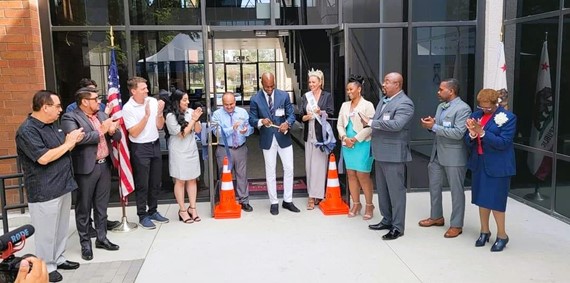D’Andre Lampkin is the visionary behind the Lampkin Foundation, a nonprofit organization benefiting grassroots community improvement projects, encouraging young leaders, and responding to emergencies across the U.S. In the following article, D’Andre Lampkin discusses how to strengthen communities, both large and small, through partnerships.
Everyone grows up being told they can’t make it through life alone, yet many survive every day without a lick of help from their surrounding community. To make communities stronger, however, those with an eye toward solutions must start helping people work together.
Social concerns affect more than just attitude and mental wellbeing. Research shows that a person’s social environment can impact their physical health as well. When philanthropists and organizations work together, they can therefore help people physically, mentally, emotionally, and even economically. Fortunately, such community networks are already beginning to rise up.
How do these networks plan on collaborating to help their communities at large? First, the better question is why communities affect individuals so strongly in the first place.
D’Andre Lampkin Explains How Social Concerns Affect Wellbeing
In 2017, studies demonstrated that 20% of a person’s health outcomes depended on factors relating to their environment and social life. About 40% depended on their personal behavior. The twist is that those same studies showed that personal behavior also depended on where a person lived, which could affect their access to food, transportation, etc.
This means that, in total, up to 60% of an individual’s health outcomes, including those directly related to their risk of premature death, rely on the strength of their community. While it may sound dramatic, this implies that failure to strengthen a community could literally mean the difference between life and death for those who live there.
D’Andre Lampkin of the Lampkin Foundation says that not only does a person’s community impact their risk of death, but it also affects their quality of life. Putting aside the fact that stress itself can shorten a person’s lifespan by at least close to three years, those who live in stressful environments find it harder to find reasons to wake up in the morning. In turn, this lowers their ambition to make friends, find jobs, or engage in productively joyful habits.
The darkest side of these findings is the implication that luck can play a role in both quality of life and even life expectancy. If a person is born in a zip code where the environment fails to support healthy living, how are they supposed to stand a chance? This is where collaborative philanthropy provides a vital answer.
The Power of Community Involvement
D’Andre Lampkin explains that with so many issues at hand, those who want to improve their communities certainly have their work cut out for them. Luckily, those already taking this burden on their shoulders are already providing a structure for how collaborative philanthropy can strengthen communities. It begins with just a few main goals:
- Look for similarities in the struggles plaguing various members of the community
- Look for how the community is currently failing to meet those needs
- Identify how currently existing organizations can work together to fill the gap
- Build communication between said organizations and philanthropists
- Focus filling these gaps around pre-identified social determinants of health
- Streamline efforts to provide aid in the most efficient ways possible
When looking at the problem itself, it becomes easy to see how this guideline formulates a direct course of action. The actual steps taken will vary from one community to another. Even so, this attempt at collaborative philanthropy will address the aforementioned needs regarding physical, emotional, and economic needs currently hurting members of a community at large.
D’Andre Lampkin of the Lampkin Foundation explains that this means that community engagement bears the potential to increase community members’ life expectancy and quality of life. The important part is to solidify a national standard so that all communities wishing to reap such benefits can follow the same structure. Luckily for all involved, several organizations are already working to achieve just that.

The Future of Collaborative Philanthropy
The two most notable organizations working to provide guidelines for collaborative philanthropy are the Aetna Foundation and the National Quality Forum. By working both with each other and with a number of privatized member groups, they are working to provide more efficient community solutions for everything from healthcare to economic relief.
Together, they’re working on solutions to a number of issues. These include, but are certainly not limited to:
- Providing employment to the unemployed
- Providing food to those living in food deserts
- Providing better education to those who need it
- Increasing social support to those in isolation
- Increasing access to healthcare
Conclusion
For some time, D’Andre Lampkin says that many have relied on their national governments to fix their problem. If waiting will not alleviate their needs, it falls on groups like NQF and Aetna to fill the gap. Other organizations, however, are able to join them in their goals. If they answer the call, then increased quality of life may eventually be made available to all, regardless of geographic origin.

